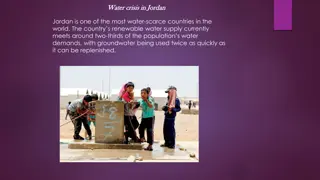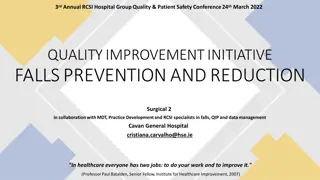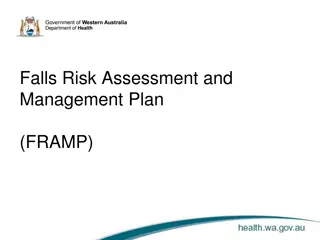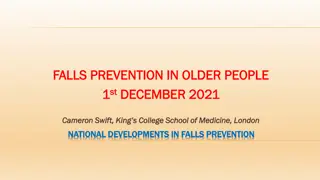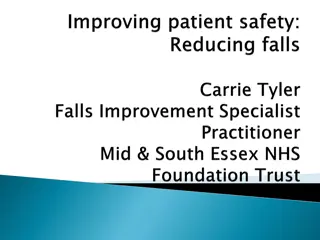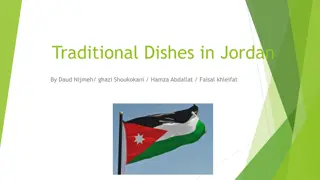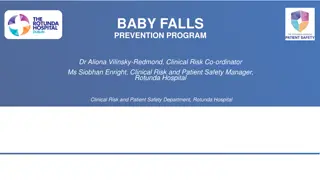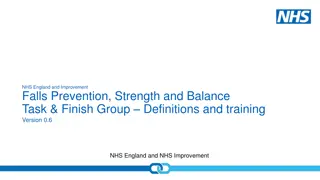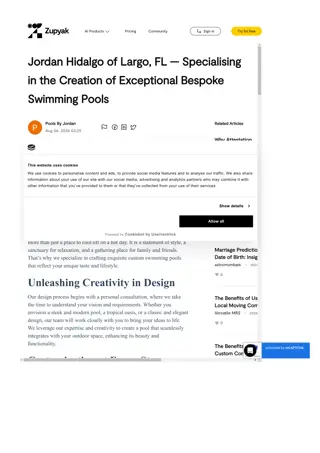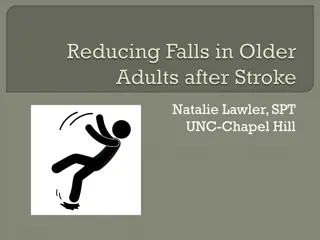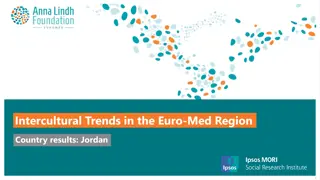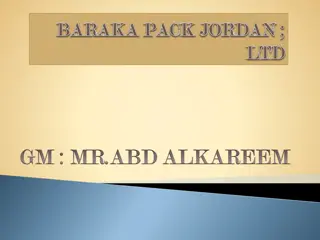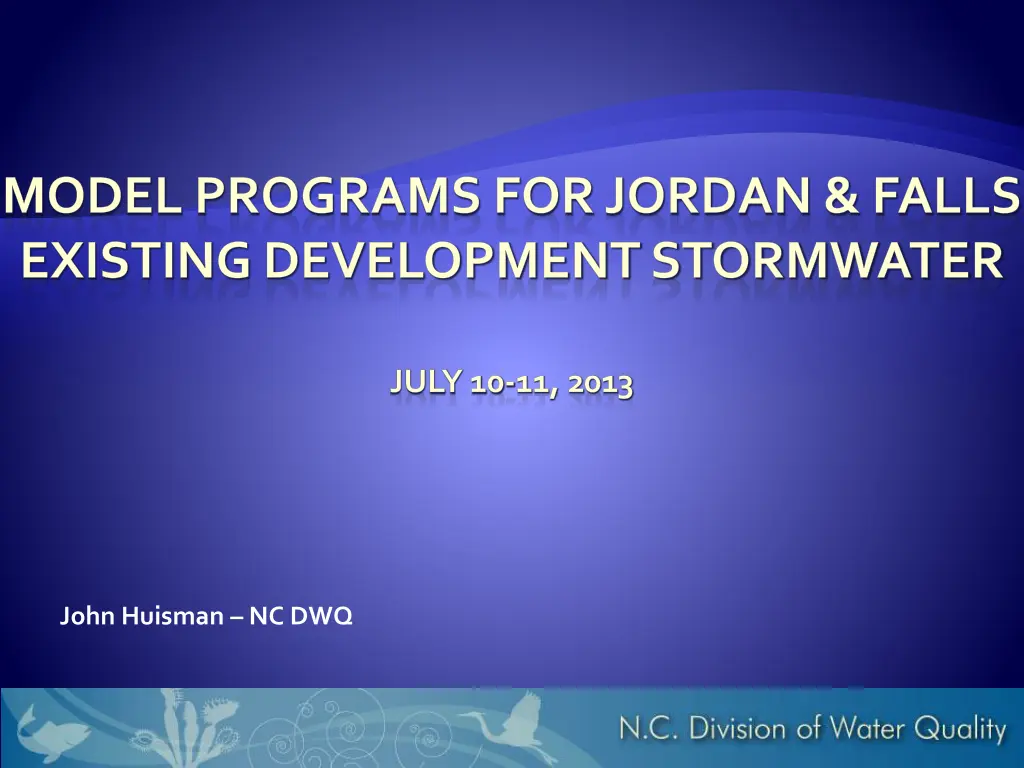
Model Programs for Jordan Falls Development Stormwater
Explore the existing development stormwater programs for Jordan Falls, focusing on reduction goals, implementation requirements, and ongoing work areas. Discover model program outlines, template information, key rule requirements, and the expansion of creditable measures. Learn about the collaborative efforts of local governments, state, and federal entities in implementing measures for reducing nutrient loads.
Download Presentation

Please find below an Image/Link to download the presentation.
The content on the website is provided AS IS for your information and personal use only. It may not be sold, licensed, or shared on other websites without obtaining consent from the author. If you encounter any issues during the download, it is possible that the publisher has removed the file from their server.
You are allowed to download the files provided on this website for personal or commercial use, subject to the condition that they are used lawfully. All files are the property of their respective owners.
The content on the website is provided AS IS for your information and personal use only. It may not be sold, licensed, or shared on other websites without obtaining consent from the author.
E N D
Presentation Transcript
MODEL PROGRAMS FOR JORDAN & FALLS EXISTING DEVELOPMENT STORMWATER JULY 10-11, 2013 John Huisman NC DWQ
Existing Development Requirements (Falls / Jordan) Local Governments and State & Federal Entities Implement measures - reductions from existing developed land Falls Stage I : Back to baseline by 2020 Stage II: 40% TN & 77%TP reduction goals by 2036 Implementation triggered by EMC approval of model program Jordan Stage I (completed) : Administrative measures Stage II : 8% TN & 5%TP - monitoring triggers 2014 & 2017 Model Programs to EMC in July 2013 (Falls/Jordan)
Document Purpose & Organization Guide to help affected parties meet rule implementation requirements Part I: Model Program Outlines structure & elements for affected parties to include in their program submittals Part II: Companion Document Supporting information and guidance for affected parties
Part I: Model Program Local Program Template Information required for EMC approval Methods to Quantify Load Reduction Needs WS Model Jordan / Nutrient Accounting Tool Falls Onsite Accounting Failing Septic & Discharging Sand Filters Available Nutrient Measures
Part II. Companion Document Terms & Concepts Key Rule Requirements Adjusting Allocation & Reduction Needs Addition of Nutrient Measures Trading Program Implementation & Annual Reporting Appendices Rules / Session Law Process for approving additional load reducing measures
Areas of Ongoing Work Expanding the toolbox of creditable measures Developing a trading framework Refining onsite accounting methods Completion of these items requires additional time before Model Program can be finalized
Expanding Toolbox of Measures Identified as a need by affected parties Provides more cost-effective measures Flexibility in developing local programs DWQ & UNRBA providing joint funding for project to determine reduction credit for additional measures RFQ submitted -Contractor selection ongoing Timeline for project completion ~ 24 months
Collaboration w/Affected Parties All Parties Meetings: June 5thand 6th Presented overview of draft model program Provided draft for review & comment Nutrient Scientific Advisory Board (NSAB) Ongoing technical & policy input on measures, accounting & model program Watershed Model (Jordan) 205J Project s PTRC measures crediting & SW Tool
Next Steps Continue initiative to expand measures tool box Develop trading framework & onsite accounting refinements with stakeholder input Jordan Final Model Program Approval November EMC Falls Final Model Program / Update Jordan ~ 24 Months
Requested Action Staff recommends the EMC defer approval of the model program while the Division continues to collaborate with the affected parties to complete ongoing initiatives to expand the list of available nutrient reducing measures.
QUESTIONS? John Huisman - NC Division of Water Quality Nonpoint Source Planning Unit John.Huisman@ncdenr.gov 919-807-6436 DWQ Falls Lake Website: http://www.fallslake.org

